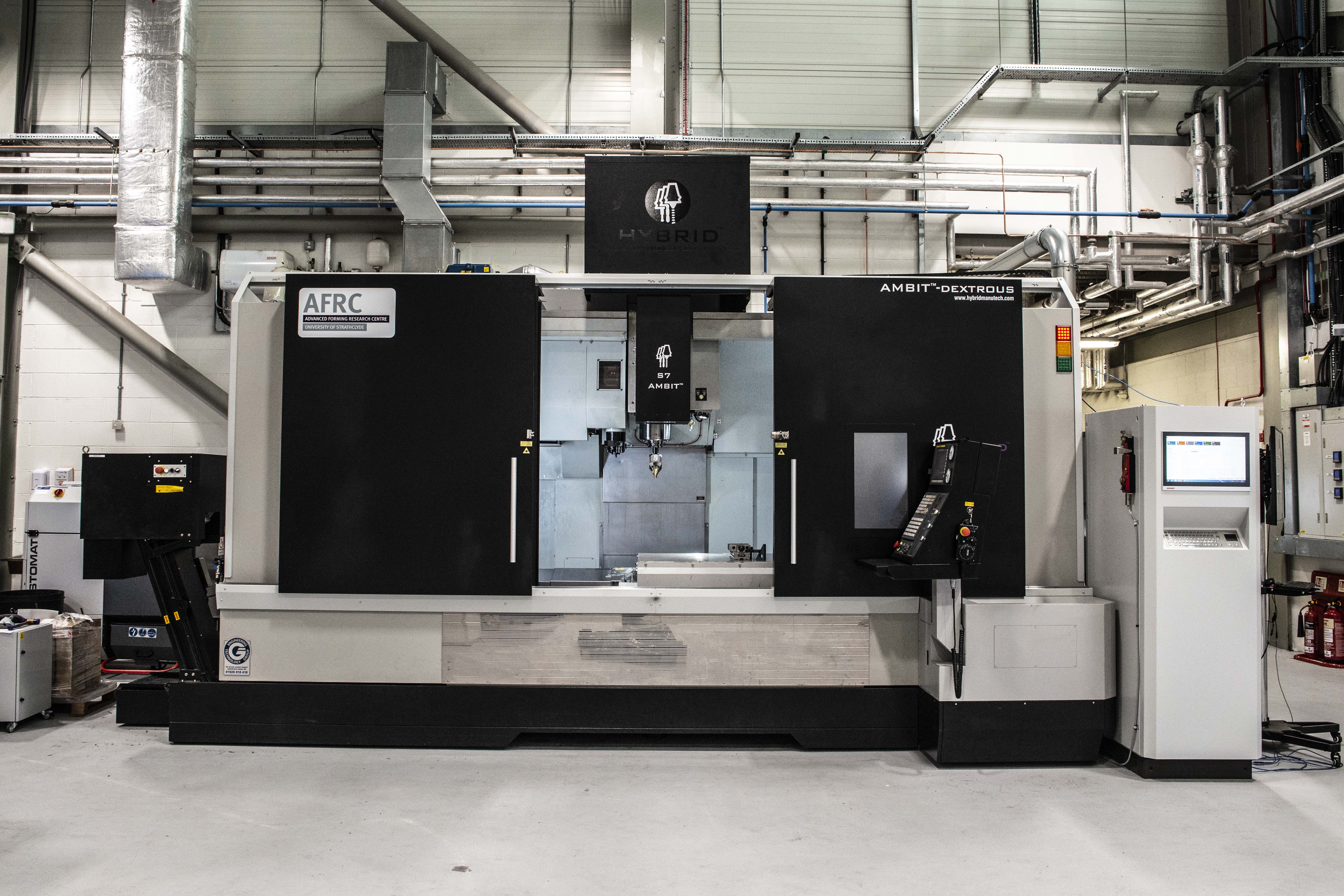A consortium of seven companies and organizations are utilizing additive manufacturing to enable low cost remanufacturing in the UK’s tool and die sector, as part of a £1.2M ($1.5M) two-year project funded by the UK government’s Technology Strategy Board Innovate UK. The project, named DigiTool, was established to help combat costly die replacements and repairs, with the aim of extending lifespan and functional performance using additive manufacturing and other new technologies.
The University of Strathclyde’s Advanced Forming Research Centre (AFRC) is providing the additive manufacturing technology to DigiTool with its Laser Metal Deposition (LMD) Hybrid Machine, which is also capable of CNC machining. Toolroom Technology Limited (TTL), a UK-based turnkey software solutions provider, is leading the project, and other partners include Applied Tech Systems (ATS), Hybrid Manufacturing Technologies (HMT), INSPHERE Ltd and Kimber Mills International, all of which specialize in areas of advanced manufacturing.
Stephen Fitzpatrick, Machining and Additive Manufacturing Team Lead at the AFRC, commented, “Investment has been slow across the tool and die sector, which has made it difficult for organisations with limited resources to rethink their manufacturing process.”
“Through our additive manufacturing digital framework, we’ll provide these companies with access to new research, technology and insight at a low cost.”

Implementing different advanced manufacturing techniques from one machine
The consortium and its DigiTool project aims to help organizations of all sizes embrace additive manufacturing, adaptive machining and industry 4.0, therefore providing them with the ability to remanufacture worn or damaged dies.
Using new technologies and processes, like additive manufacturing, companies in the tool and die sector can overcome the costs of die replacement and repairs through remanufacturing. This will help firms save on costs and materials, while simultaneously improving their sustainability with less wastage.
“The consortium is all bringing different areas of expertise to the project, which is hoped to enhance competition across the industry through the uptake of innovation and new technology,” added Fitzpatrick.
Using the LMD Hybrid Machine platform, the consortium is currently investigating additive manufacturing and adaptive solutions for remanufacturing the damaged areas on dies. Worn areas are identified using scanning and metrology, after which the die is remanufactured using additive manufacturing. Initial project trials have already been completed, and currently analysis of a die for remanufacturing in a railway application from Kimber Mills is underway.
Significantly, the LMD Hybrid Machine is a legacy CNC machine tool retrofitted with additive manufacturing technology, developed to demonstrate to SMEs that they can adopt additive manufacturing using their existing CNC technologies without spending money on an entirely new machine. ARFC’s LMD Hybrid Machine fits within the DigitTool framework, which aims to provide a single digital platform for integrating new technologies for SMEs. “Many firms within the sector may already have a machine that can be retrofitted to integrate laser metal deposition, allowing them to upgrade current assets and save the costs of purchasing a brand-new machine,” explained Fitzpatrick.

Industries opt for additive manufacturing to repair components
Spare parts and repair is a significant area of implementation for additive manufacturing. Several industries have employed the technology to help repair components, and now with the DigiTool project, additive manufacturing is being used to help revolutionize repairs in the tool and die sector as well through remanufacturing.
For example, in aerospace, directed energy deposition (DED) is being used and developed to repair aircraft components as part of the Additive Manufacturing Optimisation and Simulation (AMOS) project. Recently, the Canadian/European consortium was called to present its findings at the opening of the new UK Nuclear Advanced Manufacturing Research Centre (AMRC) Midlands in Derby.
3D printing has also been employed by the automotive industry to help repair vehicles in the Repairbot project, developed by Swinburne University of Technology, Sydney-based industrial automation firm Tradiebot Industries and automotive aftercare company AMA Group. The Repairbot project aims to provide an automated, 3D printed repair service for cars that is low cost and can be commercially implemented with same-day fixes of damaged vehicles.
Subscribe to the 3D Printing Industry newsletter for the latest news in additive manufacturing. You can also keep connected by following us on Twitter and liking us on Facebook.
Looking for a career in additive manufacturing? Visit 3D Printing Jobs for a selection of roles in the industry.
Featured image shows parts produced with the LMD Hybrid Machine at the AFRC. Image via University of Strathclyde.

